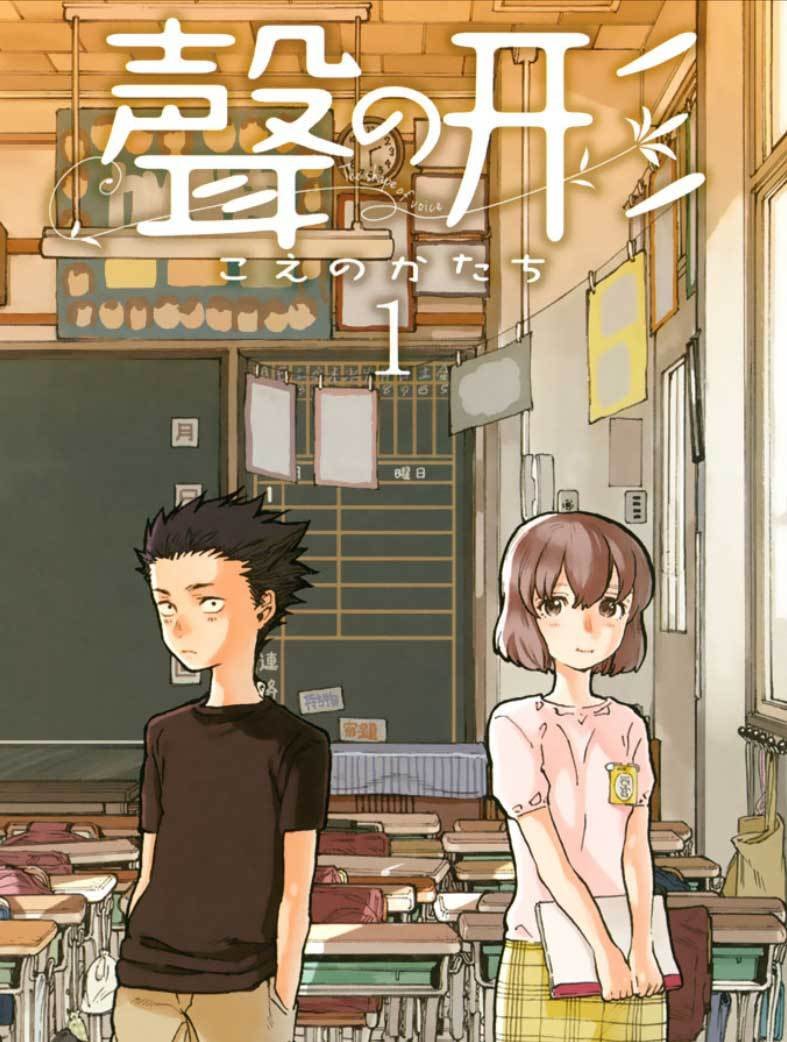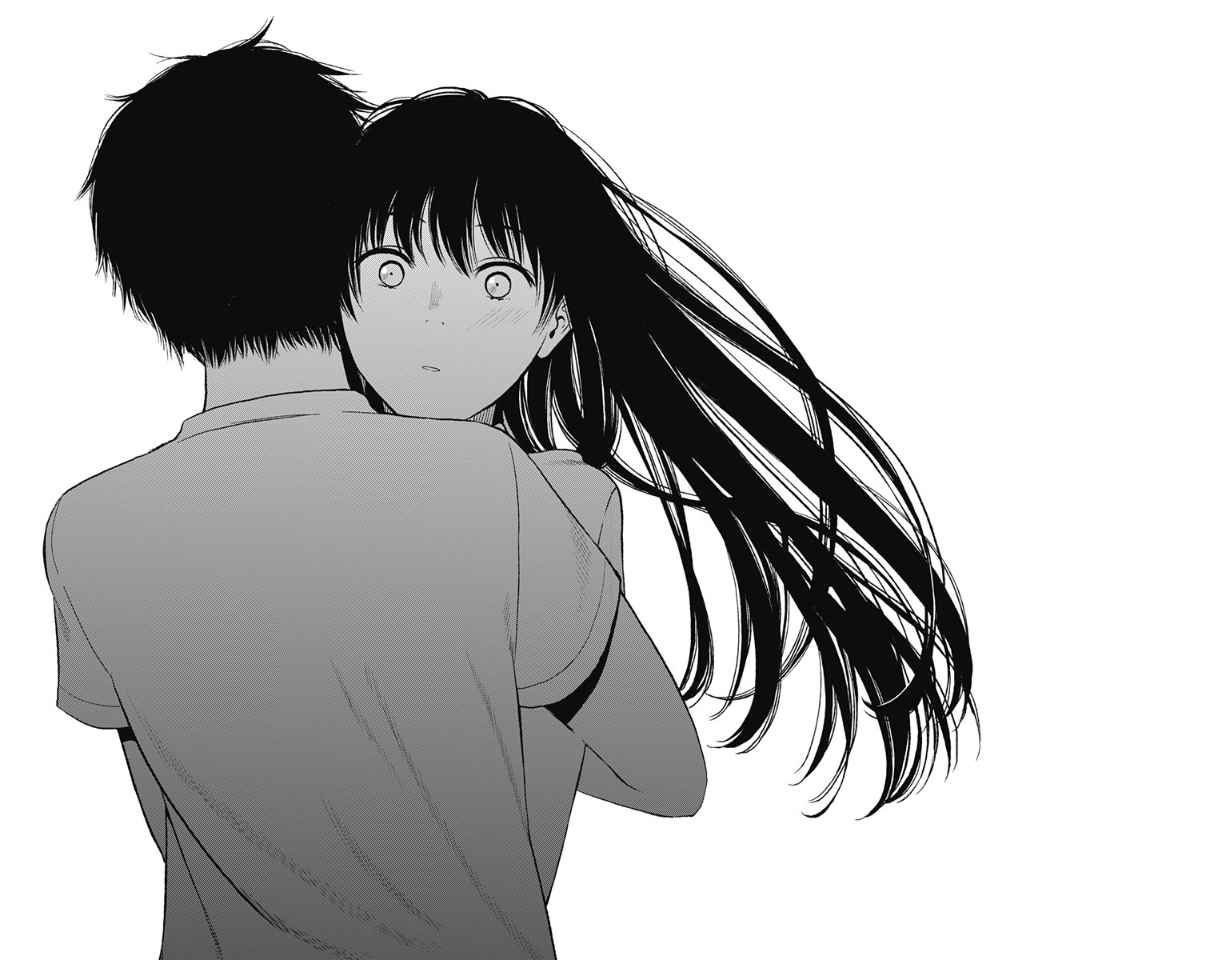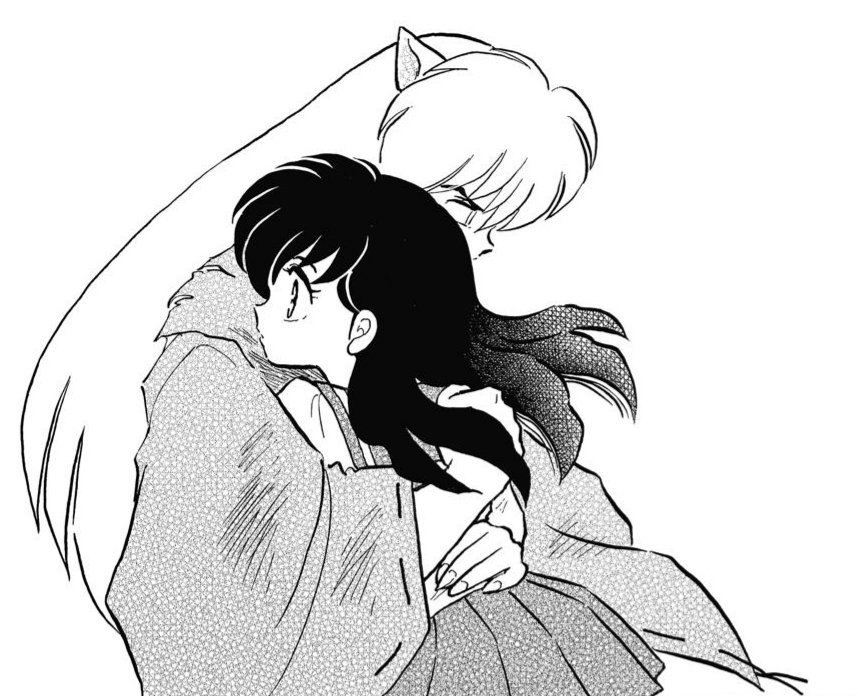Shaping the Future since Day One: Women in Manga

Even though women and men in Japan have been equal by law since the end of the Second World War, women still strive for real equality, even in modern-day Japan. Like in many parts of the world, women in Japan are rather pushed into roles, where they are responsible for taking care of the family. They have been allowed to work since the 1920s, but the balancing act between managing both family and a job keeps on being considered difficult by some parts of Japanese society. On top of this, the wages of women are worse compared to those of their male colleagues.
FULL METAL ALCHEMIST
While there is still a lot of work to do in a lot of fields of work and social life, some aspects and areas of culture or society are blessed with a healthy, long-lasting participation by women. One of these areas is also one of the most important cultural exports Japan has to offer: the manga industry.
Ever since the upcoming of modern manga, which was shortly after the second world war, women were able to shape the media along with their male coworkers. This may be a reason why manga are so incredibly diverse in the themes they cover, the storytelling they deliver and the art they offer. The unique feeling a manga radiates when read is mostly owed to the highly talented women and men working on them.
INUYASHA
And even if the women’s involvement inside the manga scene is backed by a long and rich history, they are still far outnumbered by men.
To get a better look at the influence and importance of female mangaka, this article will look at some of the outstanding artists and writers, their careers, as well as the pieces of work they have created, as they have ultimately shaped the manga landscape into what it is today.
MACHIKO HASEGAWA
Hasegawa-sensei could be described as one of the first important and commercially successful female mangaka in recent history. Born in 1920 in Saga prefecture, which is located on the Kyūshū island, south of Japan, her work with manga started in the year of 1934, when she was just 14 years old. This is where she started off under the teachings of Tagawa Suihō, a mangaka who became popular during the second World War.
The work she did for Suihō may be one of the inspirations for Hasegawa’s most well-known piece of work, the yonkoma manga Sazae-san, which she started working on in 1946. Yonkoma manga uses a certain type of panel-format, typically found in comedy series. Here, a page or strip consists of four panels that are vertically arranged and almost always deliver a punchline within the last panel, thus rounding out the scene.
Sazae-san is all about the series main character, Sazae Isono, a 27-old woman, living with her family and husband in the post World War Japan. Sazae is depicted as a cheerful, emancipated woman, who stands up for women's rights, while being respectful towards traditions. But Sazae and her family are confronted with lots of hardships during these post-war times. This is also the reason Hasegawa often incorporated a lot of comedic elements, as well as contemporary events into her work, making it enjoyable, yet relatable for her readers. With her ability to capture the zeitgeist, Sazae-san was able to reach out to an audience that was as big as the entire population of Japan.
Sazae-san ran for almost 28 years, ending in 1974 and consisted of over ten thousand comic-strips, which were later collected and released in sixty-eight volumes. The manga also got an Anime adaptation in 1969, that is still airing and includes over 2500+ episodes, making it one of the longest running anime ever. After finishing her work on Sazae-san Hasegawa started working on other projects, which unfortunately never could live up to the success that her first series was able to accomplish. Thanks to her overwhelming popularity and the early impact she had, Hasegawa is considered a frontrunner in modern manga culture, often mentioned alongside her colleague Osamu Tezuka and his series, Astro Boy. Also thanks to Hasegawa and Sazae-san, modern yonkoma comedy manga, such as Izumi Tsubakis Gekkan Shoujo Nozaki-kun, still enjoy great popularity among fans.
RUMIKO TAKAHASHI
Known under her nickname “the Princess of Manga”, Takahashi-himesama reigns from Niigata prefecture. Born in 1957 and working in the industry since 1978, Rumiko Takahashi is maybe one of the most prolific mangaka ever and considered an absolute heavyweight in the sphere of manga.
This is mostly to the four highly popular, commercially immensely successful series she released throughout her one-of-a-kind career.
Her first major hit was Urusei Yatsura, which began serialization in 1978. It tells the story of 17-year old good-for-nothing Ataru Moroboshi, who, after a series of unfortunate events, becomes the object of desire for Lum Invader. But Lum herself is the princess of an extraterrestrial species that once tried to invade earth. These odd circumstances lead to all kinds of strange and comedic encounters between the different characters. Urusei Yatsura was, and still is, extremely popular, especially inside of Japan, resulting in multiple movies, videogames and even pachinko-games made after it.
Takahashi’s second strike was the 1980 release Maison Ikkoku, a rom-com drama that was mostly targeted at a young, yet grown up, predominantly male audience, making it part of the Seinen genre. Maison Ikkoku is about university student Yūsaku Godai, who lives alongside other people in the name-giving housing complex. This is where he meets Kyōko Otonashi, a widow, who is introduced as the new housekeeper right at the start of the series and Godai immediately falls in love with her. The creation was another tremendous success, resulting in an anime adaptation in 1986.
After summing up Urusei Yatsura and Maison Ikkoku in 1987 and starting up some smaller projects, Takahashi hit her third strike in the same year, which was Ranma ½. It’s an action and comedy series about the arranged relationship between main character Ranma Saotome and his future bride, Akane Tendō. As if their situation couldn’t be weird enough already, Ranma and some of his family members are cursed, changing their appearance when coming in contact with cold water. While all of Takahashi’s releases turned internationally prolific sooner or later, Ranma ½ achieved this right from the start.
Accumulating more and more fame both domestically and internationally, Takahashi could not be stopped, eventually releasing her most famous work in 1998. The fantasy series InuYasha, that mixed action and romance elements in a delicate way, was able to attract an enormous audience like few other manga were able. Millions of people are familiar with the story of 15-year old Kagome Hirugashi, who is able to travel back and forth between modern-day Tokyo and Japan during the Sengoku period. On her travels through medieval Japan, she teams up with half-demon Inu Yasha and together they experience the most diverse adventures. The unending love for InuYasha by its fans is also the reason it turned into a multi-media franchise, including video games, movies and other spin-off series.
After completing InuYasha, Takahashi worked on other Projects like the manga series Kyōkai no Rinne which ran between 2009 and 2017. Even today she is still actively working in the industry and has a running series called Mao. Thanks to her hard work and huge talent, she has become one of the richest people originating from the manga scene.
Takahashi’s is probably one of the most diverse mangaka ever, with each of her works being part of a different genre or combining them to create something new and special. Her manga are easy to recognize, whether it be through her unique style or how her characters are written. For example, Takahashi often likes to implement strong, independent, multi-facetted female characters in leading roles into her stories. She is also often said to be the first woman to successfully set foot in the Shōnen genre and leave a lasting impact on it. Her originality, versatility, as well as her legacy, leveraged Takahashi to a place where she stands next to other manga legends on a pedestal she won’t ever leave.
YEAR 24 GROUP
The title “Year 24 Group” of “Fabulous Year 24 Group” was given to a number of upcoming female manga artists, who started working on manga in the 1970s. Unlike other group projects, such as CLAMP, the “Year 24 Group” and its members were not working together on their published works. Instead, it is a term to sum up the different female mangaka who made a name for themselves by creating shōjo manga in the 1970s.
During the 1960s, shōjo manga, manga that are specifically targeted at a young, female demographic, was under heavy critique by many. This critique emerged, because unlike many other manga genres, shōjo was not able to reinvent itself at these times. But this changed with the upcoming of the “Year 24 Group”.
The ten women who were associated with the group are known for their lasting influence and bringing the much needed change to the shōjo manga landscape. Thanks to artists like Moto Haigo, Riyoko Ikeda or Keiko Takemiya, shōjo was able to leave school life or slice-of-life settings behind and began expanding, as they popularized the inclusion of science-fiction and fantasy elements.
On top of their already important influences in the shōjo scene, many members of the “Year 24 Group” are also responsible for frontrunning the yaoi and yuri genres. These manga, who center around romantic same sex relationships, were never really able to amount to commercial success, until members like Ryōko Yamagishi started working on them.
NAOKO TAKEUCHI
Serialized between 1991 and 1997, Takeuchi’s works became an integral part for a lot of kids that grew up between the early 90s and early 2000s.
Children and Teenagers from all around the globe would follow the adventures of Usagi Tsukino and her Pretty Guardians, that fight for Love, Justice, Intelligence, Passion, Courage and Beauty.
Up to this day, Naoko Takeuchi is regarded as one of the most important mangaka, especially in the shōjo and Magical Girl genre, almost single-handedly reviving the latter. Sailor Moon, as a piece of art, was ahead of its time in many regards. From reoccurring themes of girl power and the blurred lines between what is considered female and what is considered male, to the thematic of love, trust and friendship, Sailor Moon covered everything.
Her feminist creation is still cherished to this day, inspiring thousands of people from all around the globe to pick up the pencil, creating their own stories, their own universe. The inclusion of queer characters was groundbreaking during the times it was released and led to heavy, now infamous, censorships in the western dub for the Sailor Moon anime.
After her tremendous success, Takeuchi toned down the amount of work she was doing, focusing more on one-shots and small series. She is still occupied as a mangaka, but also uses her time to get involved with the Sailor Moon anime adaptation, releasing art books and writing song lyrics for the Sailor Moon franchise. Even today Takeuchi is one of the most commercially successful mangaka to work in the industry, with over 35 million copies of Sailor Moon alone being sold till this day.
HIROMU ARAKAWA
1973 born, Hokkaidō native Himoru Arakawa could be considered Rumiko Takahashis heiress, as she is responsible for creating one of the most well-known shōnen manga to exist, Full Metal Alchemist. Like many other mangaka, Arakawa started off at a young age, when she was predominantly creating dōjinshis, which could be described as non-professional, fan-made manga.
She did her first professional work, when she signed a contract with Square Enix in 1999. There she was assigned to assist Hiroyuki Eto on her series Mahōjin Guru Guru. Besides her job as an assistant, Arakawa also created her first original work, Stray Dog, that was also published by Square Enix. Just 2 years later, Arakawa was able to release her biggest hit yet, the critically acclaimed, long-running manga series Full Metal Alchemist.
Full Metal Alchemist, often abbreviated to FMA, was released between 2001 and 2010. The story takes place in a world, where alchemy is a common practice and the leading field of sciences. With the help of alchemy, the practicing alchemists are able to create almost anything, as long as they give something of equal value in exchange. The protagonists, brothers Edward and Alphonse Elric, are part of this line of work. Together they are constantly roaming the land in search of the Philosophers Stone, a tool which may be able to help them retrieve what they have lost in their childhood.
11 years after FMA came to an end, it is still considered one of the most important shōnen manga to exist. Its imaginative, deep, yet well-structured world building made the series a huge success in and outside of Japan and a most know among manga fans. FMA is praised for its great pacing, the well-balanced mix of action and comedic scenes and features singular artwork.
Arakawa worked on other successful manga after her work on FMA was completed. For example, there is her coming-of-age comedy manga Silver Spoon, which ran for 8 years and finished in 2019. Since 2013 she is occupied with illustrating and writing the historical fantasy series The Heroic Legend of Arslan. Thanks to Arakawa, as well as Rumiko Takahashi of course, more and more women were able to establish themselves in the shōnen manga scene.
Q HAYASHIDA
Born in Tokyo, 1977, Q Hayashida probably is one of the most unique female mangaka out there. As many modern-day manga artists do, Hayashida is very secretive about her personal life, hence there isn’t much to be found out about her. Through interviews she gave, it is know that she wanted to become a mangaka even before she started college and struggled with her art style throughout her early years.
Her professional career started in 1998, after she created some of her original works. In 1999 she started working together with Japanese videogame company ATLUS to bring out a manga based on their videogame Maken X, called Maken X Another. From there on it was only a few months till Hayashida eventually released Dorohedoro in the year 2000.
Dorohedoro, a dark fantasy action manga, takes place in a dystopian universe, where two worlds coexist next to each other. On one side there is the world of magic-users, and on the other side, the world where magic-users practice their magic on humans, just referenced to as “the hole”. Caiman, the main character, is a resident of the hole and became a victim of said magic-users, turning his head into that of a reptile and erasing the memories of his past. In search for his memories and old looks, Caiman joins forces with restaurant owner Nikaido to find what was lost.
What makes Dorohedoro so special is not only Hayashida’s one-of-a-kind art style or the grotesque character design, but also how incredible well her characters are written. Even though the story has its protagonists and its antagonists, the characters and their personalities are not part of this bilateral thinking. All characters, no matter if good or bad, look scary and do a lot of killing. Yet they are still portrayed as sympathetic, fun and human, despite their looks and actions, asking the reader to look past the outward appearance.
Dorohedoro came to a close in 2018, after running for a solid 18 years. While working on it, Hayashida picked up a few other projects every now and then. This included work like one-shots or even doing character design for EA’s 2011 videogame Shadows of the Damned. In 2019 she began with writing and illustrating her newest series, Dai Dark.
CLAMP
Founded in 1987 as an all-female dōjinshi circle, CLAMP was able to amass huge success with their original works of art. Originally starting off with eleven members, the number of women involved with the group shrank over the years, leaving it with four active members today. These include Nanase Ohkawa, Satsuki Igarashi, Mick Nekoi and Mokona Apapa.
The business model that structures CLAMP is truly special. While the group at first worked separated from each other and only met up for occasional meetings, they today share a common workspace. There is also a rather unclear distribution of roles within the CLAMP workspace. While Ohkawa is working as the group's spokesperson, she is also working as the producer/director and responsible for creating storyboards. Mokona Apapa is in charge of the character design but also works on backgrounds or other parts. Nekoi and Igarashi are working on backgrounds, yet they also do different work. CLAMPs roles are not permanently assigned and the role distribution may vary from manga to manga.
Mostly known for their work on shōjo manga, CLAMP’s huge catalogue, that includes more than twenty-five different series and one shots, also has seinen, shōnen or josei manga in it. Because of this wide range of different target demographics, CLAMPs creations also differ in the genres they are part of.
CLAMP is easy to be recognized through their highly detailed, colorful artwork and their character/costume design that has made them famous beyond the borders of manga. Because of this they were hired to work on other projects by larger companies throughout multiple occasions. For example, they were working with Sunrise to create the character design for the famous anime Code Geass: Lelouch of the Rebellion in 2006 and did costume design for Bandai Namco’s fighting game Tekken 6.
YOSHITOKI OIMA
Yoshitoki Ōima is on a steady rise to become one of the biggest and brightest shining stars in the manga scene. Born in 1989 in Gifu prefecture, Ōima had her first serialized work published in 2009, when she was just 20 years old. Four years after her debut, she released her biggest hit yet, the drama A Silent Voice.
The inspiration to create A Silent Voice came from the environment Ōima grew up in, as her mother is was a sign language interpreter. A Silent Voice revolves around Shōko Nishiyama, a deaf girl, and Shōya Ishida, her middle school bully. After Shōya himself becomes a victim of bullying, caused by the actions in his past, he seeks out Shōko to redeem his deeds. Ōima’s highly emotional, very sensitive story is able to handle the problematic themes of bullying and forgiveness in a tasteful matter. This is also thanks to the approval of the Japanese Federation of the Deaf, which helped make A Silent Voice a long running and award winning series.
With the serialization of A Silent Voice coming to a close in 2014, Ōima waited till 2016 to begin her next piece of work: To Your Eternity. The fantastical story about a shapeshifting, immortal being named Fushi, that learns what it means to be human, became a huge success in a short amount of time. The manga is laying its focus on the characters that accompany Fushi’s travels. Different viewpoints, facets and fates are found inside the world of To Your Eternit, making it a gut-wrenching experience.
Despite her young age and her relatively fresh career, Yoshitoki Ōima already gathered a huge fan base around her. Because of her emotional, down-to-earth storytelling, the manga, as well as the anime community, is watching her next career move with high expectations. This led to legendary animation studio Kyoto Animation turning A Silent Voice into a movie in 2016 and To Your Eternity getting an anime adaptation in 2021. From here on, Ōima is sure to shape the manga scene in the next years to come.
Manga can be everything. It may be beauty or horror, love or hate. It may comfort you in tough times or get your blood pumping when nothing else could. And what a manga someone is reading actually resembles, is always up to the author, the artist and the intention behind it. The calmness and the craziness, the choice to read whatever you want, is what every manga reader loves.
The discrepancies between women and men are felt in many aspects of everyday life, and manga is no exception to this. Women’s participation is yet to be fully embraced. Manga are still part of a gender-specific thinking, where stories are said to be more appealing to a female or male audience. Of course, this is mostly due to marketing reasons, but the time has come to leave this mindset behind and let everybody enjoy whatever stories they want to. Countless mangaka have proven that if you want to create something original, something exciting, you have to draw your inspirations from many sources. The female mangaka that paved the way, as well as those who are just getting started, are an exceptional example of this.
Thanks to women like Kazue Kato [Blue Exorcist], Yana Toboso [Black Butler], Akimi Yoshida [Banana Fish] or Fumiya Sato [The Kindaichi Case Files] and many other female mangaka working in the male dominated industry, the medium is as diverse as it is today. Thanks to their work and because of their love for their work, we are able to experience all kinds of characters and settings. Female characters are no longer put into the role of a mere love interest or serve as fan service, instead their characters are more and more diverse and often rival the male characters in wit and strength. Thanks to female mangaka, the future of manga is looking brighter and brighter every day.
Text By: Constantin Paul




























































